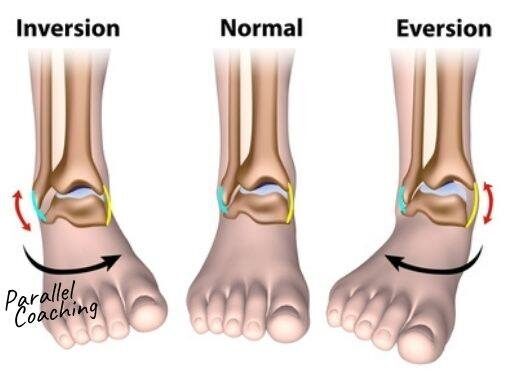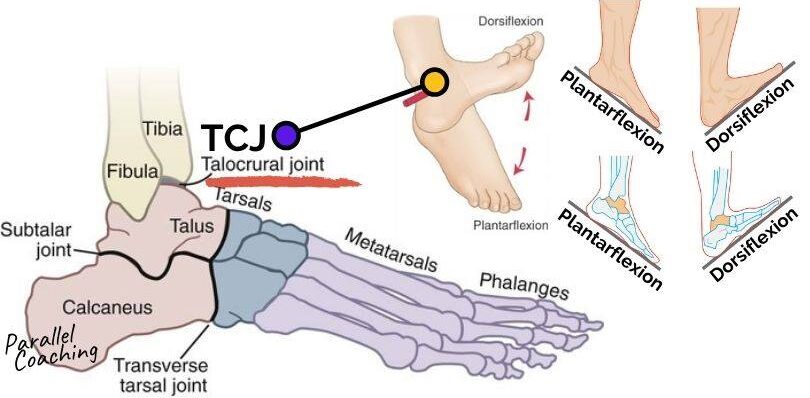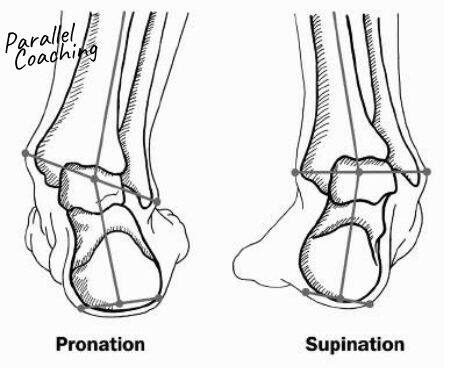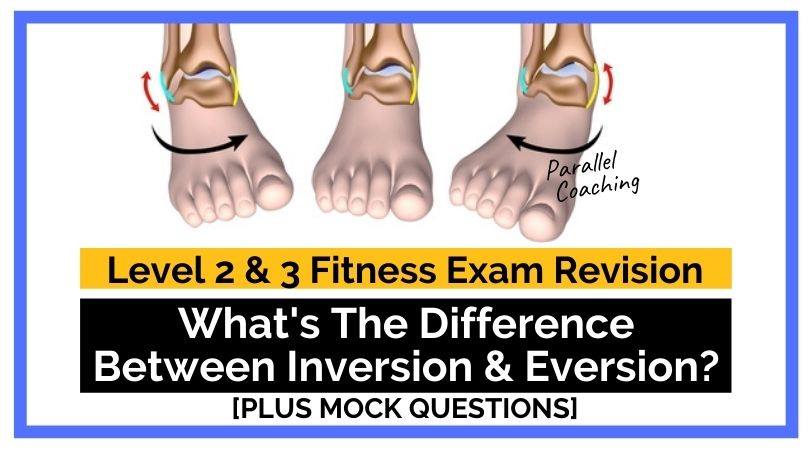This blog will teach you the difference between Inversion and Eversion of the Ankle and how to remember these joint actions for your Level 2 and 3 anatomy and physiology exam
You’ll discover:
- Why FitPros find joint actions hard to revise
- What’s the difference between Inversion and Eversion?
- What are Dorsiflexion and Plantarflexion
- What are Pronation and Supination?
- How to learn with simplicity for the rest of the modules
- Three Example Mock Question about Ankle Movements
Why FitPros find the Joint Actions hard to revise
The Joint Actions are notoriously claimed to be one of the hardest modules within Level 2 and 3 Anatomy and Physiology exam syllabus, so you are not alone if you find this area difficult to understand.
Unlike other areas of anatomy (like bones), it can be hard to make sense of the joint actions from an image in a manual. It may also feel like this is less directly related to training clients as a FitPro.
Although you might not actually be quoting the technical joint action terms with your clients, the knowledge of this is foundational and absolutely crucial in order to create balanced workout plans and understand how the body moves.
Key ankle and foot movements
There are 6 Key Joint actions that occur in the ankle and foot, here’s the difference between them
- Eversion
- Inversion
- Dorsiflexion
- Plantarflexion
- Pronation
- Supination
What’s the difference between Inversion and Eversion?

Eversion of the Ankle
- Tilting of the sole of the foot outwards to face laterally
- This looks like you are pushing your big toes into the ground and lifting the little toe up.
- The movement is occurring at the SubTalar Joint which is where the talus meets the calcaneus.
- Performed by the fibularis brevis and fibularis longus.
Inversion of the Ankle
- Tilting of the sole of the foot inwards to face medially.
- This looks like you are pushing your little toes into the ground and lifting the big toe up.
- The movement is occurring at the SubTalar Joint which is where the talus meets the calcaneus.
- Performed by the tibialis posterior and tibialis anterior muscles
What’s the difference between Dorsiflexion and Plantarflexion?

Dorsiflexion of the Foot
- Pulling the foot upwards towards the leg, making the angle on the front (anterior) of the ankle smaller
- This looks like you are bringing “toes towards your nose”
- The movement is occurring at the Talocrural joint ( between the end of the leg – tibia and fibula, and the talus)
- Performed by the tibialis anterior, extensor hallucis longus and extensor digitorum longus.
Plantarflexion of the Foot
- Pulling the foot downwards away from the lower leg, making the angle on the front (anterior) of the ankle larger
- This looks like you are “pointing” your toes away from your nose
- The movement is occurring at the Talocrural joint ( between the end of the leg – tibia and fibula, and the talus)
- Performed by the gastrocnemius, plantaris, soleus and fibularis longus.
What’s the difference between Pronation and Supination?

Pronation of the Foot
- Flattening motion making the foot longer and wider
- Composed of three components: subtalar eversion, ankle dorsiflexion, and forefoot abduction, these three distinct motions of the foot occur simultaneously during the pronation phase.
Supination of the Foot
- Lifting motion, making the foot shorter and narrower
- Composed of three components: subtalar inversion, ankle plantarflexion, and forefoot adduction, these three distinct motions of the foot occur simultaneously during the supination phase.
| Pronation | Supination | |
| Talocrural joint | dorsiflexion | plantar flexion |
| Subtalar joint | eversion | inversion |
| Transverse tarsal joint | abduction | adduction |
How to learn with simplicity for the rest of the modules
You’re guaranteed to get 5 to 8 questions on the joint actions in either Level 2 or Level 3 exams
Throughout all our revision boot camps I have created clear video tutorials to TEACH you complex topics like the joint actions and make it easy to remember on exam day.
This means you can break complex topics down and more importantly remember them come exam day.
The two most popular revision bootcamps are
I’ve done the heavy lifting here and constantly link to things you already know throughout each revision bootcamp.
In summary
- Inversion and Eversion are joint actions that happen at the SubTalar joint (ankle)
- Pronation and Supination of the foot are more complicated movements with at three joint actions per movement.
- Here’s what Lydia had to say about the A&P Revision Mastery Bootcamp
I can’t recommend Parallel Coaching enough their learning material is fantastic and definitely was a huge factor in me passing my A&P level 3.
Lydia
Test your knowledge with today’s joint action mock questions:
[NOTE: The answers are below the 3rd questions]
1.If a client’s weight is bias to the medial edge of the foot. What would you likely see at the ankle?
A. Inversion
B. Eversion
C. Plantarflexion
D. Nothing
2.What joint is responsible for Dorsiflexion?
A. SubTalar Joint
B. Hinge Joint
C. TaloCrural Joint
D. Plantarflexion
3.When looking from the front. Is the Tibia on the inside or outside of the Right leg?
A. Inside
B. Outside
4.During Supination of the foot what occurs at the subtalar joint?
A. Inversion
B. Eversion
5. If a client performs a calf raise. What is happening to the foot?
A. Plantarflexion
B. Dorsiflexion
C. Inversion
D. Eversion
What’s the CORRECT answer?
Answers to the mock questions are :
Question 1= B, Question 2 = C, Question 3 = A, Question 4 = A, Question 5 = A
If you want more mock questions like this, then you can download more Free Mock Questions: DOWNLOAD NOW
Need More Help with your Anatomy Exam Revision?
Discover How 6500+ Fitpros In Training Are Walking Into Their Exam With Confidence And Guaranteeing A Pass
Are you tired of staring at your manual and not knowing where to start?
Our revision mastery bootcamp breaks everything down into a clear and easy to follow structure.
You can download the videos to MP3 and MP4 to slice your revision time in half and finally understand the key principles of exercise.
This is not another course with more exams – it HELPS pass the course you’re already enrolled on!
“EVERYTHING You Need To Learn, Revise And Pass Your Fitness Exam”
If you want to get your revision structured, learn everything you need to know and feel confident on exam day, then click the link below:
https://revision.parallelcoaching.co.uk/fitness-exam-revision-courses

Hayley “inversion and eversion” Bergman
Parallel Coaching
P.S. You can also find us on the following platforms:
Instagram: https://www.instagram.com/parallelcoaching
Facebook: https://www.facebook.com/ParallelCoaching
Twitter: https://twitter.com/ParallelCoach
YouTube: http://bit.ly/2F1Z1bs

